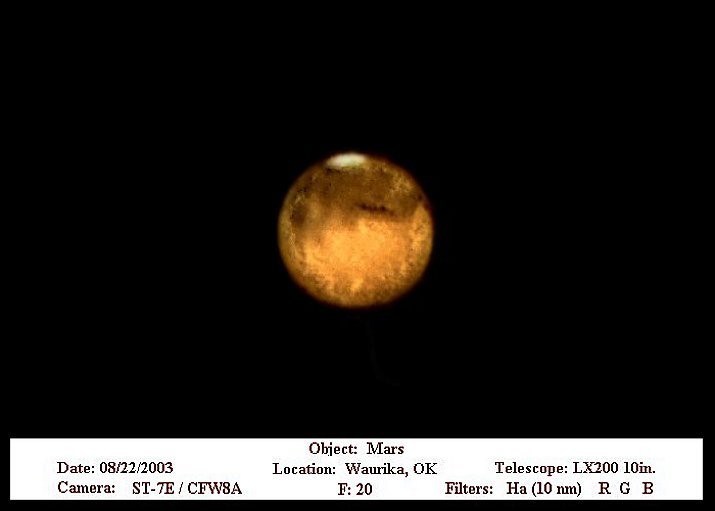

|
Mars has been known since prehistoric times. When Mars is in opposition it is very bright and shines with a distinctly ruddy hue. This ruddy hue, suggesting blood, may be the reason why Mars was named after the Roman mythical god of war. Mars has two permanent ice caps consisting of frozen water and carbon dioxide. The southern polar ice cap is visible in my image. (South is orientated to the top of my image.) Mars is the closest planet to the Earth with the possibility of harboring life as we know it. Much study is being conducted to determine the existence of current or fossilized microscopic life. Mars is thought to have been much warmer in the past. High-resolution images from spacecraft orbiting the planet show features suggesting rivers of water and possibly shallow seas existed in the past. Presently Mars is far too cold and the atmosphere is much to thin for liquid water to exist on the surface. 1 http://www.seds.org/nineplanets/nineplanets/mars.html
|